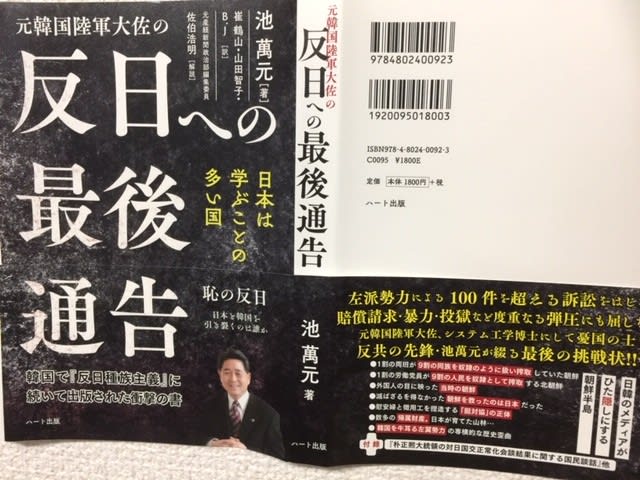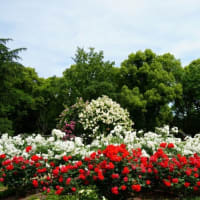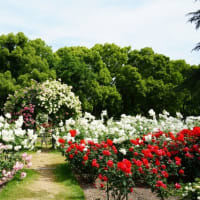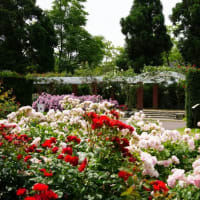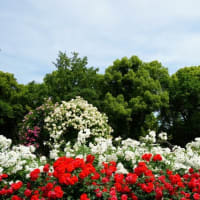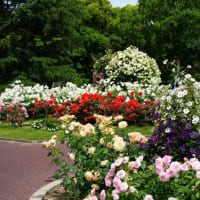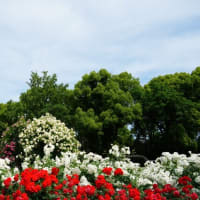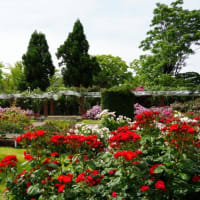This chapter proves that I, Masayuki Takayama, and Hiroshi Furuta were right.
At the same time, it also exposes the grave fact that the Japanese mass media has never reported the truth about the Korean Peninsula and Korea.
Japan's media, represented by the Asahi Shimbun and NHK, have not reported the truth at all, in deference to China and South Korea, countries of abysmal evil and plausible lies.
On the contrary, they have continued to provide the Japanese people with their propaganda by airing outrageous Korean dramas, which are lies and plagiarism of Japanese TV dramas.
China and South Korea are the only anti-Japanese nations on the planet that have been practicing Nazism in the name of anti-Japanese education since the end of World War II.
Asahi and NHK continued to attack former Prime Minister Abe, a true patriot, with false reports.
The words they frequently used were "there was considering his wish to the prime minister."
The way they continue to give traitorous considering their wish to China and Korea is the very Korean people that this book fully discloses.
After the war, Masayuki Takayama taught us that many Koreans living in Japan had entered the media, including Asahi and NHK.
TBS employees have been blowing the whistle on the Internet, disclosing briefly how they came to occupy the company's center.
At the same time, it also exposes the grave fact that the Japanese mass media has never reported the truth about the Korean Peninsula and Korea.
Japan's media, represented by the Asahi Shimbun and NHK, have not reported the truth at all, in deference to China and South Korea, countries of abysmal evil and plausible lies.
On the contrary, they have continued to provide the Japanese people with their propaganda by airing outrageous Korean dramas, which are lies and plagiarism of Japanese TV dramas.
China and South Korea are the only anti-Japanese nations on the planet that have been practicing Nazism in the name of anti-Japanese education since the end of World War II.
Asahi and NHK continued to attack former Prime Minister Abe, a true patriot, with false reports.
The words they frequently used were "there was considering his wish to the prime minister."
The way they continue to give traitorous considering their wish to China and Korea is the very Korean people that this book fully discloses.
After the war, Masayuki Takayama taught us that many Koreans living in Japan had entered the media, including Asahi and NHK.
TBS employees have been blowing the whistle on the Internet, disclosing briefly how they came to occupy the company's center.
This chapter was in the top 10 most searched at some point last night.
The following is from "An ultimatum to the anti-Japanese" (Jee Man-won) by a former South Korean army colonel, published in its first printing on April 13, 2020.
The book contains facts and clarifications about why Korea is the way it is.
It is a real work of art that shows the reality of Nazism in the name of anti-Japanese education to the fullest extent.
It is a must-read for Chinese and Korean Nazis who grew up with anti-Japanese education and those who make a living as university professors in the West and Japan, despite being only capable of considering their anti-Japanese propaganda as truth.
It is a must-read for UN officials who are utterly ignorant of the Korean peninsula but take seriously the anti-Japanese propaganda they have created with their unbelievable lies.
It is a must-read for every human being living in the 21st century.
The emphasis in the text, except for the headline, is mine.
The following is a continuation of the previous chapter.
Chapter 1: Korea in the World
Chosun, where only 10% of the yangban population, exploited the remaining 90% of their people, treating them like slaves.
Joseon was founded in 1392 by Lee Sung-gye, who destroyed Goryeo in a coup d'etat.
Goryeo's loyal and senior vassals became enslaved and all those associated with them.
In addition, according to the "Nobi follows mother's status law" enacted by King Sejong in 1432, children born to yangban men and slave women had no choice but to become nobi (no means enslaved man, bi means enslaved woman) according to the status of their birth mother.
In this way, the ever-growing Nobi class was treated not as human beings but as livestock, traded for less than half the price of cattle or donkeys.
Joseon was a rare country where a privileged ruling class of only 10% treated the remaining 90% of the population as enslaved people and where the bi ruled the no.
According to a door-to-door survey conducted throughout the Korean peninsula in 1910, out of 2,894,777 households, the yangban numbered 54,217, only 1.9 percent of the total.
Although some Baekjeong were involved in slaughtering and other businesses and artisans engaged in manufacturing, they accounted for only a tiny percentage of the total.
A subheading on page 15 of "The True History of the Joseon Dynasty," written by Kim Nam in 2012, says, "Less than 10 percent of people had surnames," and Nobi and others did not have surnames.
There are no exact statistics on the composition ratio of yangban and Nobi.
However, what is essential is that the Nobi were in the overwhelming majority.
During the 518 years of Joseon rule, there were more than 1,000 cases of conspiracy. Every time an incident occurred, there was a bloody purge. Hundreds of people from the yangban family fell to the nobi.
In addition to this, the 5th King Sejong enacted the "Nobi follows mother's status law," which stipulated that a yangban child born to a woman of nobi status would become a nobi, and the number of Nobis increased geometrically.
My note: Nobi were not only objects of sale and plunder but also collateral for debts, given as gifts, and freely bought and sold (trafficked) as masters' property. According to the Matriarchal Law, a child of a nobi was a nobi; therefore, once a person fell into the nobi status, he could not leave it for generations.:
Nobi was like livestock kept by the yangban, commodities traded at less than half the price of donkeys.
The bi was the yangban's woman toyed with for the temporary pleasure of sex that produced the Nobi that occupied the top of the yangban's property list.
The yangban used a variety of means to avoid military service.
When outside forces invaded the country, the nobi class had to go to war and fight.
Most of them were Nobis owned by each yangban house, and only a few were government Nobi.
They only had a fear of the yangban and no sense of loyalty to their masters, much less the concept of the state itself.
They followed even foreign armies as long as they were kind to them, like puppies attached to those who feed them.
It is one of the reasons why Joseon had to be defeated by foreign forces.
What is the identity of every one of us?
Are we descendants of a class that made up only 10 percent of the population or of a class that made up 90 percent of the people?
Let us suppose we examine all the family histories and registers in Korea. They are all descendants of yangban.
It means that most of us are a race that has lived by deceiving ourselves.
Being descendants of yangban does not make us any better than the servants.
Records show that the people of Joseon, whether royalty, yangban, or enslaved people, were a race with a common DNA of lies, intrigue, and barbarism.
A man uninspired by civilization is more dangerous than a beast.
Lies, conspiracy, and barbarism are the words that suit people like Moon Jae-in and Cho Kuk, who have been plunging Korean society into chaos for months.
Loyal soldiers and their training were necessary to protect the country from outside aggression.
But the enslaved people of Joseon who were forced to serve were nothing more than a bunch of crows cursing their masters and the king.
They had the muscle to carry a backpack but not the muscle to fight; besides, they did not even have a concept of "what the nation was.
Therefore, whenever there was a foreign invasion, such as the Japanese invasion of Korea (1592–1598) or the Qing invasion of Joseon, it was not uncommon for Joseon soldiers to join the enemy forces.
Meanwhile, what was going on in the royal palace of Joseon in Hanyang?
Politics, intrigues, conspiracies, bloodshed, bloody conflicts, conspiracies, conflicts among the four factions (the old, the young, the southern, and the northern), regency, exile, dissection of the corpse, cutting off the head of the corpse, and so on. It was an extreme punishment for criminals: the head, torso, hands, and feet were cut off, and the body was exposed to the elements.) In a word, the royal palace was dominated by lies, intrigue, and barbarism.
While Joseon was aging as a social system consisting of a few yangbans and many Nobis, the king and his yangban were reveling in the material and sexual exploitation of 90% of the enslaved people, not to mention the Nobis.
The world was now in the age of the law of the jungle, and with the king and yangban indulging in such nonsense, it was only a matter of time before the powers that be took the country.
Japan did not destroy Joseon, but it destroyed itself.
It was left behind by the trend of the times and perished when a handful of royalty and yangban were intoxicated with the blood of their people.
As the intellectuals at the end of the old Han Dynasty (the period from Joseon to the Korean Empire) lamented, 90% of the enslaved people perished because they had no motivation to fight for the royalty and yangban who exploited them. Instead, they died because they did not try to make guns and develop science with the people.
During Joseon's 500 years, how much did Joseon develop?
The roads twisted and turned, and grass huts with straw roofs lined the streets like a flock of snails.
The streets were filled with feces and urine produced by people and livestock, and the yangban rode palanquins through the streets with their noses filled with foul smells.
The excrement from people and livestock entered the wells, and the water from the wells stank.
All contagious diseases were raging, but there were no doctors or proper medicines.
If anyone had the property they wanted, they would seize it without question and try to take it by force through torture such as caning.
There were no human rights from the beginning.
It was the work of 27 Joseon kings who ruled Joseon for 500 years and was the entire property of Joseon given to the Japanese governor.
Japan took from Joseon in 1910 90% superstitious and ignorant people, 10% greedy, lying, and conspiracy-minded yangban, and the land covered with filth and contagious diseases.
Japan seized Joseon and transformed Hanyang into a Tokyo-like city in just ten years.
To make the Koreans believe in the sincerity of the Japanese, they invested the budget that should have been spent on the Japanese mainland in Chosun to build modern buildings, factories, dams, and hydroelectric power plants that were more magnificent than those on the mainland.
Successive kings who believed in the superstition that wide roads would attract Jurchen people lost the streets that should have been there, but the Japanese built wide roads such as Jongno, Euljiro, and Taepyeongno in Hanyang.
If Joseon had continued, the straw-roofed grass huts would have remained one-story buildings even after ten million years.
However, in less than ten years, Japan built beautiful buildings with five or six stories all over Joseon.
Had it not been for Japan's forced opening, and had the Joseon dynasty still existed, would Korea have developed as much as it has in the 109 years since 1910?
I doubt it very much.
But Japan was different. Japan rescued Joseon from the incompetent dictatorship and liberated the people Nobi and Yangban had enslaved. So they opened up the country with the power of science and education.
Park Chung-hee added another 18 years of achievements on top of that foundation stone, the Korea of today.
If the descendants of Joseon's last king, King Junjong, had been king for the past 109 years, Joseon still would not have even had a two-story house because the legacy built over 500 years was at the level of a grass house.
The 123-story Lotte World Tower would have been an ENTIRELY unrealizable dream.
This article continues.
